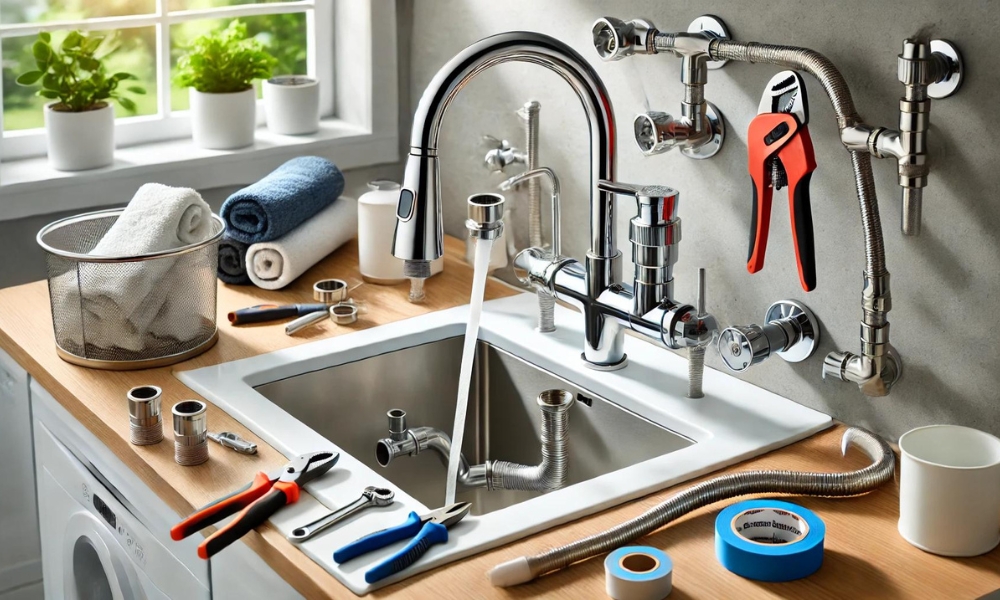Embarking on the journey to install a laundry faucet may initially appear overwhelming. However, with the right guidance, it transforms into a manageable and rewarding DIY endeavor. Whether your goal is to replace a weary, outdated fixture or to install a new one that amplifies your laundry room’s functionality, mastering the art of faucet installation can be both economical and gratifying. This comprehensive guide will navigate you through each step of the process, from grasping the essential components to achieving a flawless, leak-free setup.
Understanding Your Laundry Faucets
Before plunging into the installation process, it’s crucial to familiarize yourself with the laundry faucets and its significance. Unlike the ordinary kitchen faucets, a laundry faucet is a robust, specialized fixture designed specifically for the demands of a laundry room. It typically features a high-arc spout, making it ideal for accommodating large buckets and utility sinks. Available in a multitude of designs and finishes, a laundry faucets not only serves a functional role but also adds a touch of style to your laundry space.
What is a Laundry Faucet?
At its core, a laundry faucet is a durable plumbing fixture tailored to meet the unique needs of a laundry environment. Characteristically more rugged than standard faucets, it often boasts features such as a pull-out sprayer, an extended spout, and resilient handles. This faucets is engineered to simplify tasks such as washing clothes, filling sizable containers, and handling various cleaning chores with ease. Its robust construction ensures longevity and consistent performance, even under frequent use.
Tools And Materials You’ll Need for the Job
A successful laundry faucets installation hinges on having the right tools and materials at your disposal. Here’s what you’ll need:
- Adjustable Wrenches
- Pipe Wrench
- Plumber’s Tape
- Screwdrivers
- Pliers
- New Laundry Faucet
- Sealant
- Bucket and Towels
Benefits of Installing Your Own Laundry Faucet
Embarking on the task of installing your own laundry faucets offers a multitude of benefits. Firstly, it provides a significant cost-saving advantage compared to hiring a professional plumber. Not only do you save on labor costs, but you also gain a valuable skill set that can be applied to future home improvement projects. Beyond the financial savings, undertaking this project yourself allows you to have complete control over the installation, ensuring that the tube is perfectly tailored to your needs and preferences. This hands-on approach fosters a sense of accomplishment and boosts your confidence in managing home repairs and upgrades.
Step-By-Step Laundry Faucet Install
Step 1: Gather Your Tools And Materials
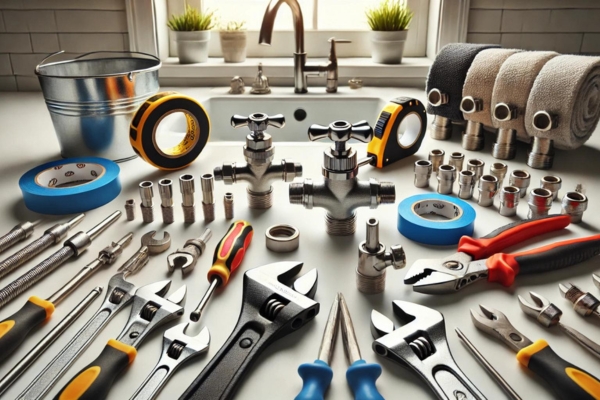
Before diving into the installation, ensure you have all the necessary tools and materials at hand. This preparatory step is crucial for a smooth and efficient installation process. Gather your adjustable wrenches, pipe wrench, plumber’s tape, screwdrivers, pliers, the new laundry faucets, sealant, and a bucket with towels. Having everything ready will streamline your work and help avoid interruptions.
Step 2: Shut Off The Water Supply
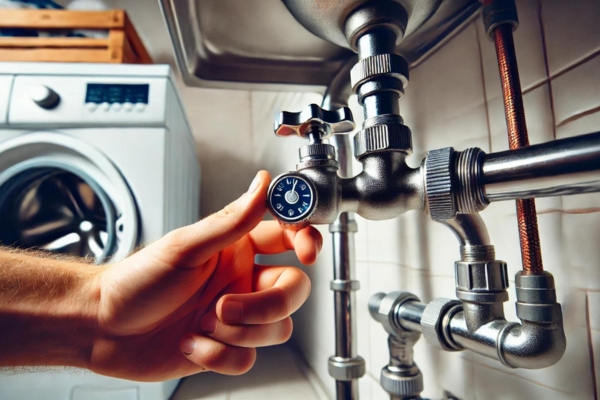
Begin by turning off the water supply to your laundry room. Locate the shut-off valves, which are typically found under the sink or near the laundry area. Turn the valves clockwise to close them completely. This step is essential to prevent any accidental water flow during the installation, which could lead to spills or flooding.
Step 3: Remove The Old Faucet
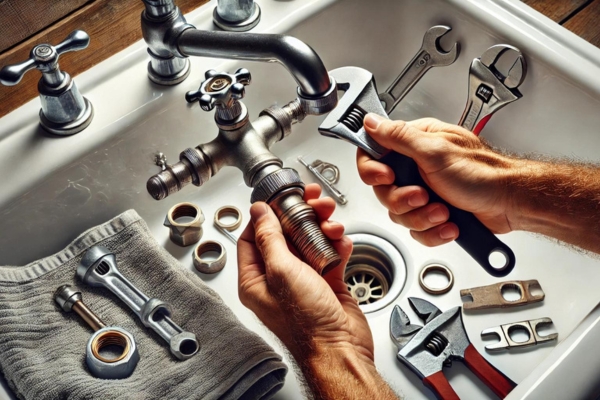
With the water supply turned off, you can now proceed to remove the old tube. Start by loosening the nuts and bolts that secure the faucets to the sink using your adjustable wrench and pipe wrench. Once these are detached, carefully lift the old faucets out of its mounting position. Clean the area thoroughly to remove any residue or old sealant that might interfere with the new installation.
Step 4: Prepare The New Faucets For Installation
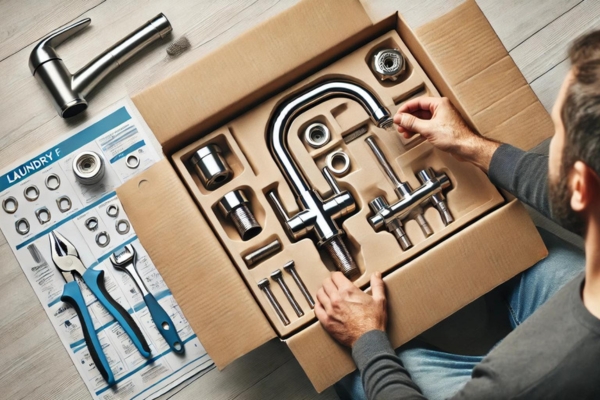
Unbox your new laundry faucets and inspect it to ensure all components are present and in good condition. Assemble any parts as needed, referring to the manufacturer’s instructions. This preparation step is crucial for a seamless installation, as it ensures that you are familiar with the components and their arrangement.
Step 5: Install The Mounting Hardware
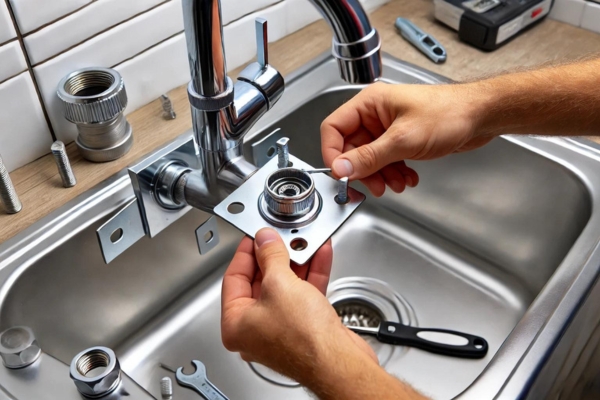
Next, install the mounting hardware for the new faucets. Position the mounting plate or brackets onto the sink and align them with the faucet’s attachment points. Secure the hardware tightly, making sure it is properly positioned to support the new tube. This step is vital for ensuring a stable and secure installation.
Step 6: Connect The Water Supply Lines
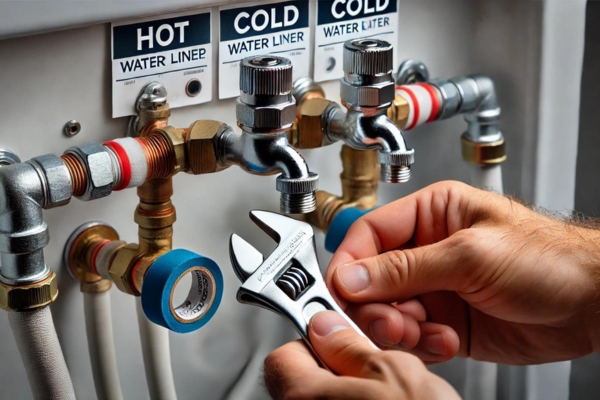
With the mounting hardware in place, it’s time to connect the water supply lines. Attach the hot and cold water lines to their respective connections on the faucets. Use plumber’s tape on the threaded ends of the connections to prevent leaks. Tighten the connections securely, but be careful not to overtighten, which could damage the threads.
Step 7: Attach The New Faucet
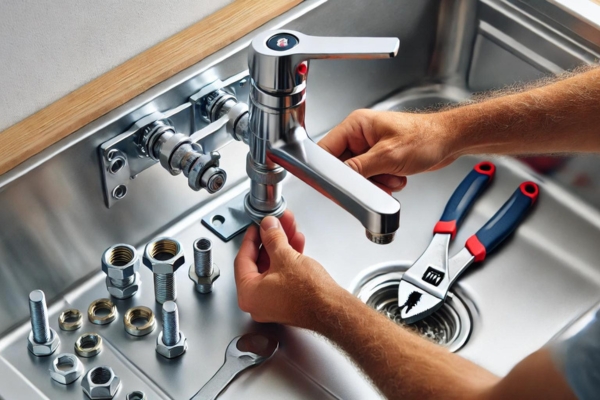
Position the new faucets onto the mounting hardware and align it with the pre-installed brackets. Secure the faucets in place by tightening the nuts and bolts that hold it to the sink. Ensure that the tube is firmly attached and level, which will help prevent any wobbling or movement during use.
Step 8: Test The New Faucet
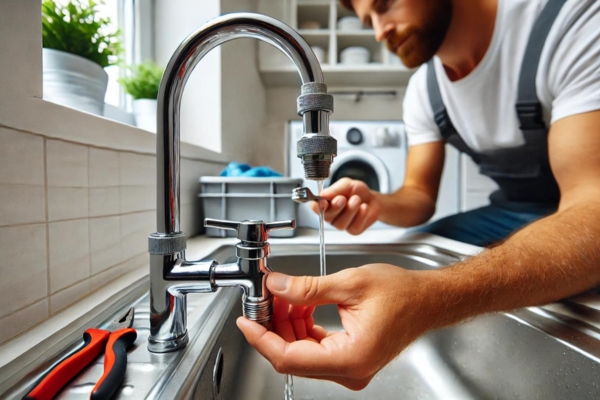
With the faucets installed, turn the water supply back on gradually. Check for any leaks around the connections and faucet base. Operate the faucets to ensure proper water flow and functionality. If you notice any issues, make the necessary adjustments or tighten the connections as needed.
Step 9: Final Touches
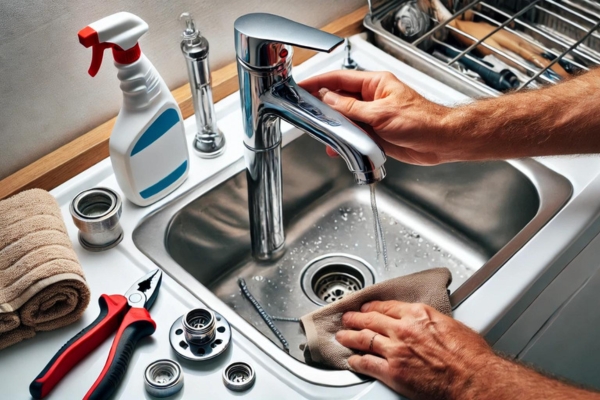
After confirming that everything is functioning correctly, clean up the installation area. Remove any debris or excess sealant around the faucets base. Ensure that the faucet and surrounding area are dry and free from water damage. This final step helps maintain the cleanliness and appearance of your newly installed faucets.
Maintenance Tips
To keep your new laundry faucets in optimal condition, regular maintenance is essential. Clean the tube periodically to remove grime and mineral deposits. Inspect the connections and faucets base for any signs of leaks or wear. Addressing minor issues promptly can prevent more significant problems down the line.
How To Prevent Common Faucet Problems?
Preventing common faucets problems involves a few simple practices. Regularly check and tighten connections to prevent leaks. Use plumber’s tape on threaded connections to ensure a watertight seal. Avoid using harsh chemicals or abrasive cleaners that could damage the faucet’s finish. By following these precautions, you can extend the lifespan of your faucets and ensure its reliable performance.
When To Seek Professional Help?
While many faucets installations can be handled as DIY projects, there are situations where professional assistance may be warranted. If you encounter complex plumbing issues, persistent leaks, or difficulty with installation, it’s wise to consult a professional plumber. Their expertise can resolve problems efficiently and prevent potential damage to your plumbing system.
How To Install A Wall Mount Faucet
Installing a wall mount faucet involves several key steps. Begin by shutting off the water supply and removing any existing fixtures. Next, position the faucet mounting plate against the wall, ensuring it’s level and aligned with the water supply lines. Secure the plate with screws and connect the faucet to the supply lines using appropriate fittings and plumber’s tape to prevent leaks. Once everything is securely fastened, turn the water supply back on and test the faucet for proper operation. Finally, check for leaks around the connections and make any necessary adjustments to ensure a tight, leak-free seal.
Conclusion
Installing a laundry faucet is a manageable and rewarding DIY project that can enhance the functionality of your laundry room. By understanding the faucet’s components, gathering the right tools, and following a step-by-step installation process, you can achieve a successful installation with confidence. Regular maintenance and preventive measures will ensure your faucets remain in excellent condition, while knowing when to seek professional help can address any challenges that arise. With this guide, you’re well-equipped to tackle your faucets installation and enjoy the benefits of a well-functioning laundry fixture.
